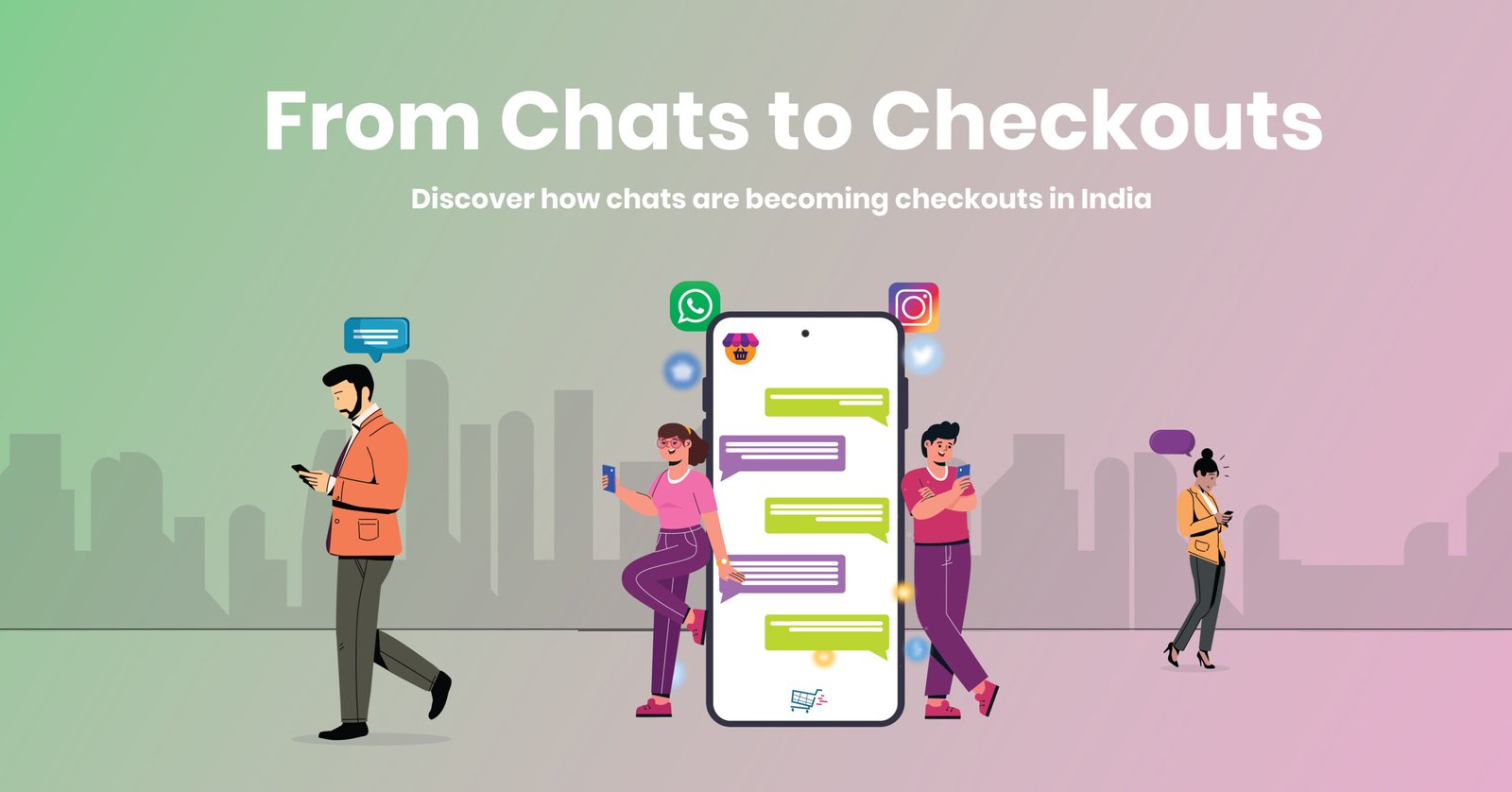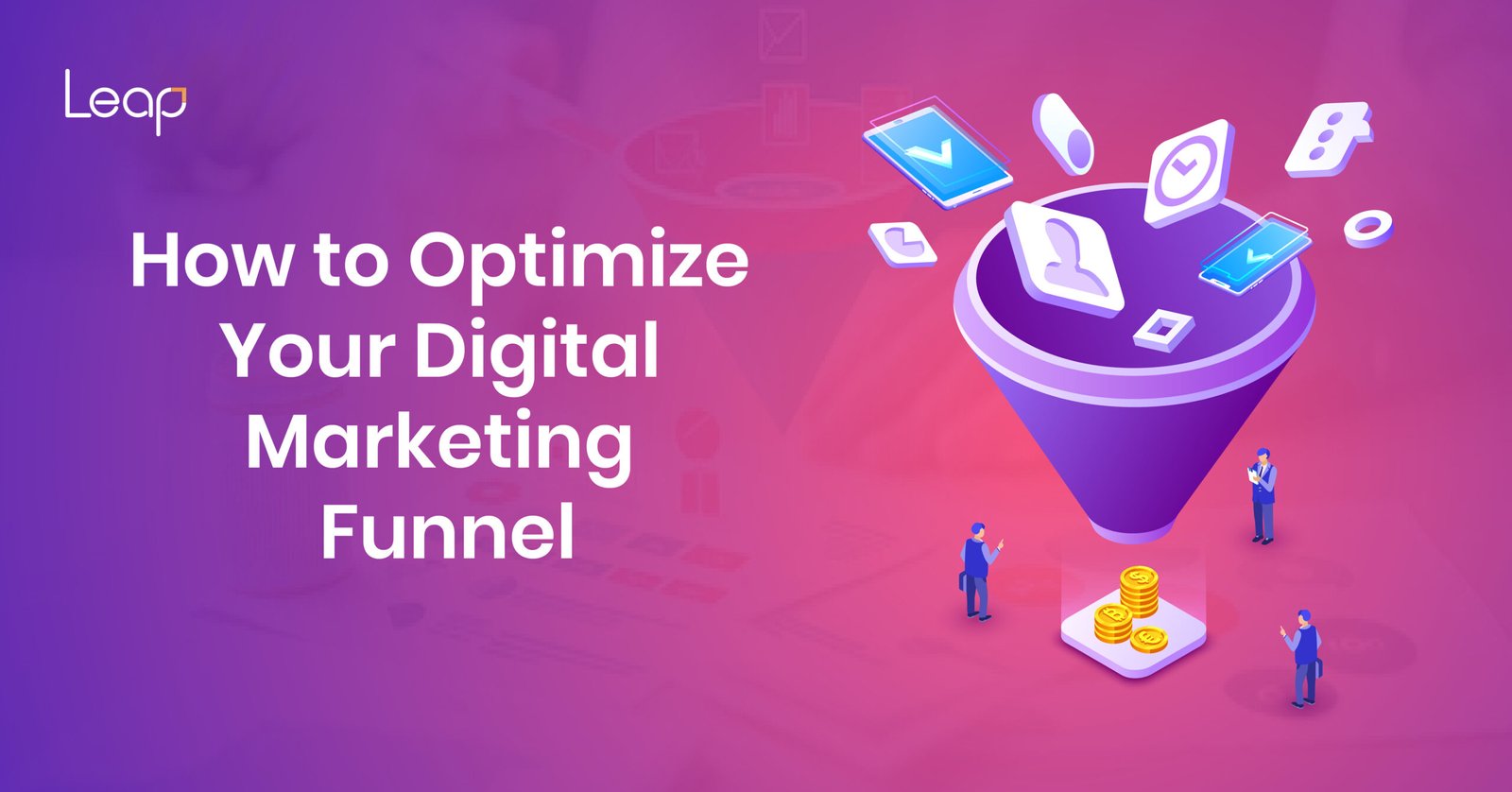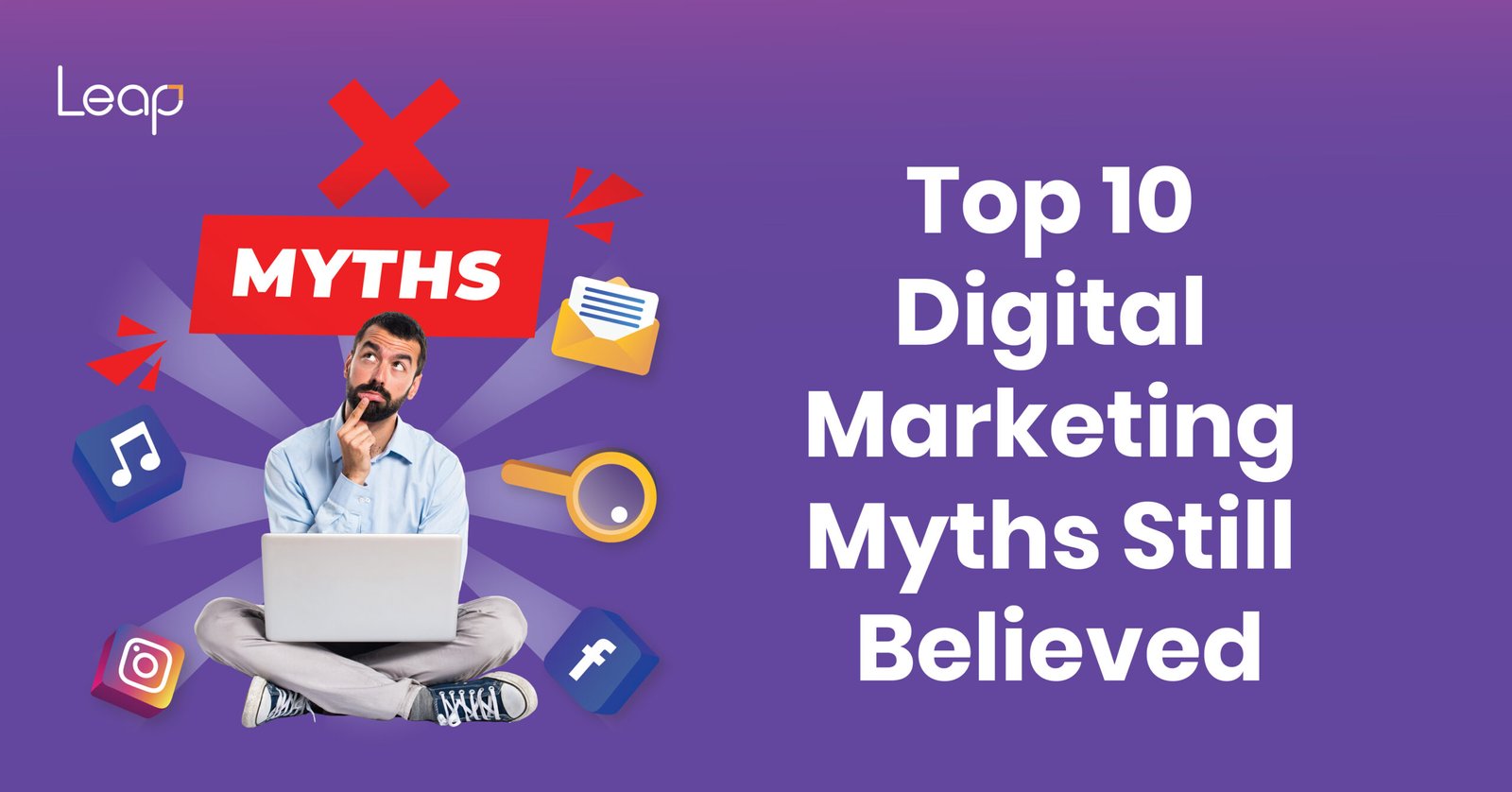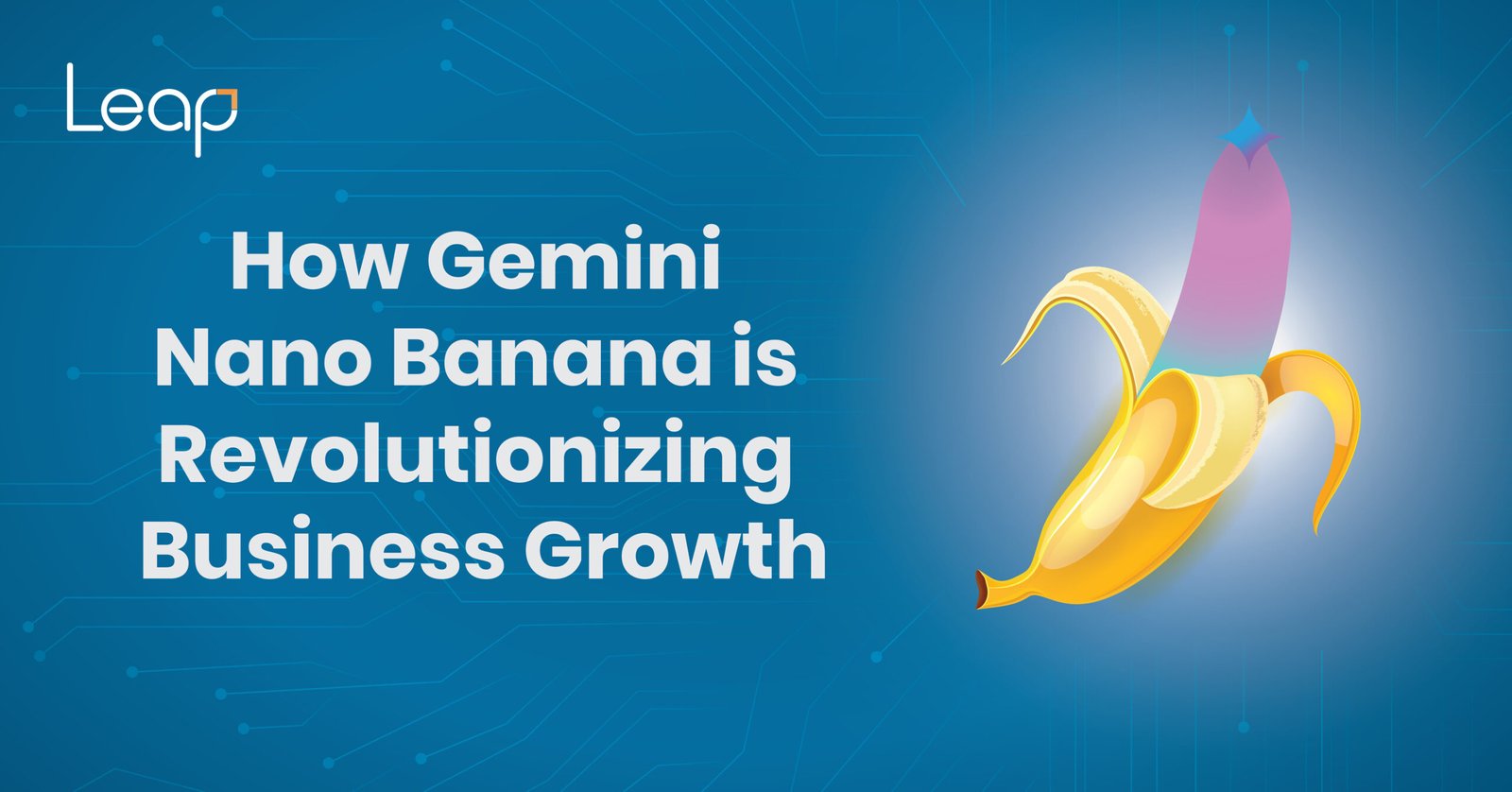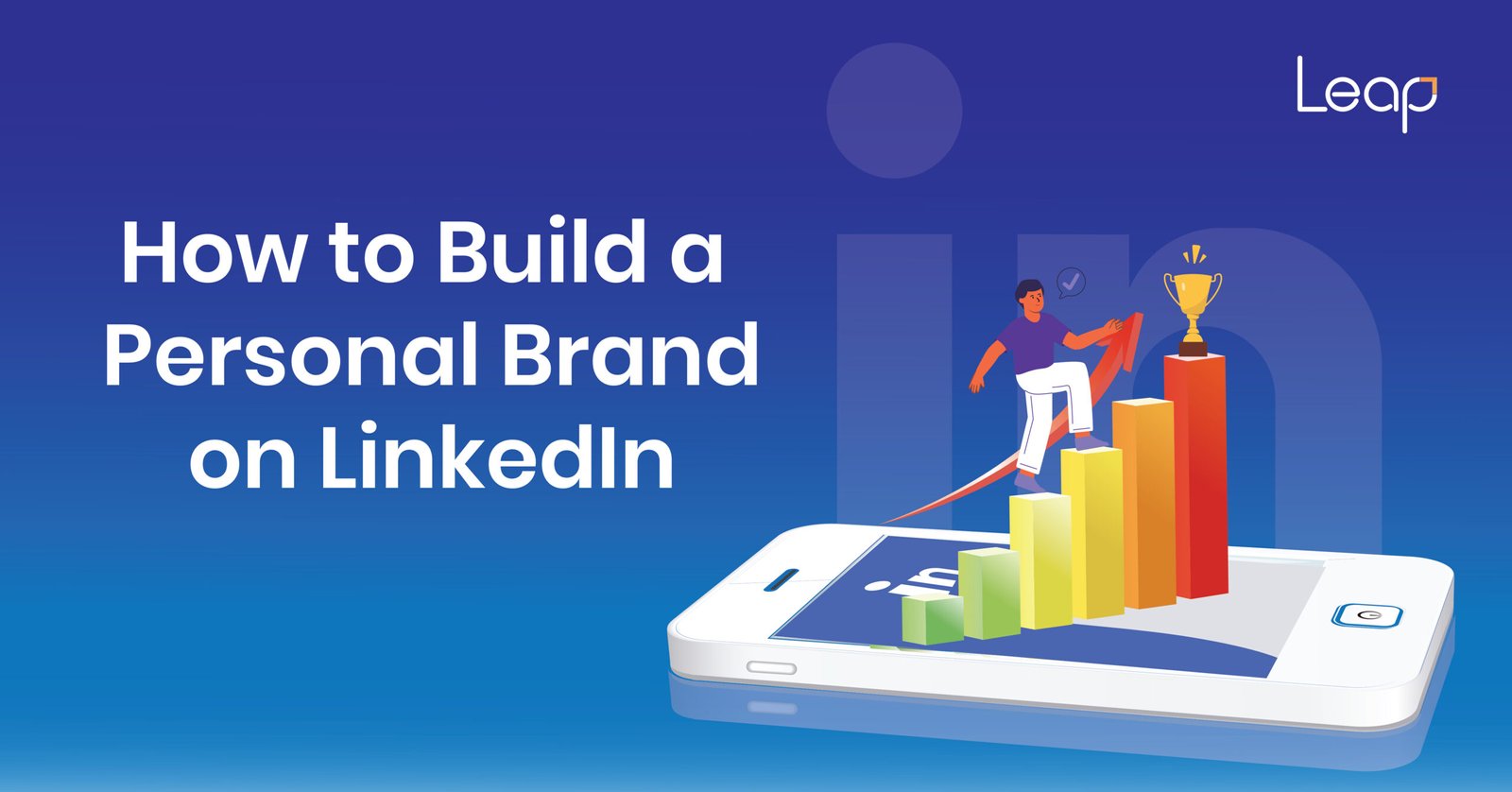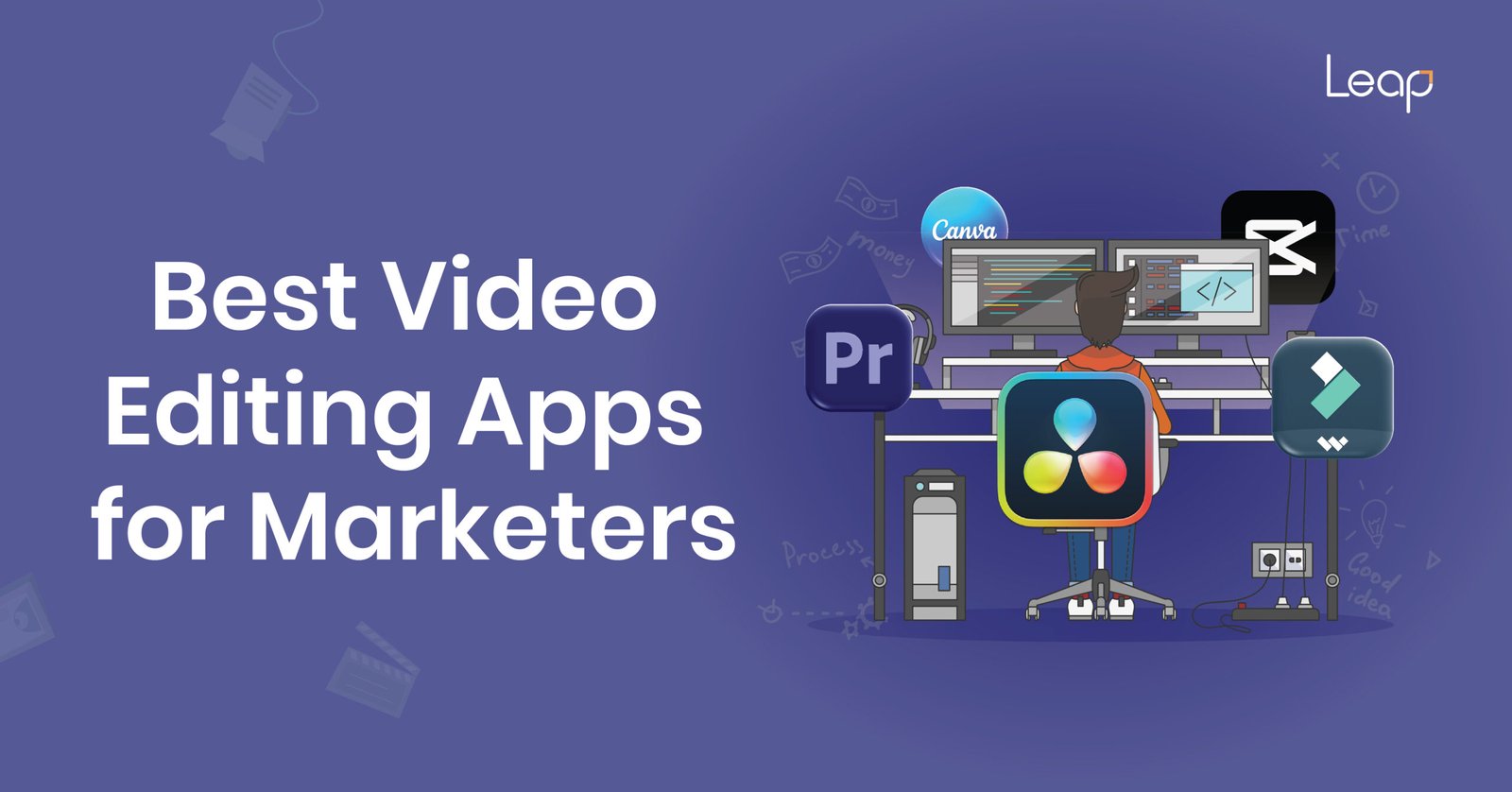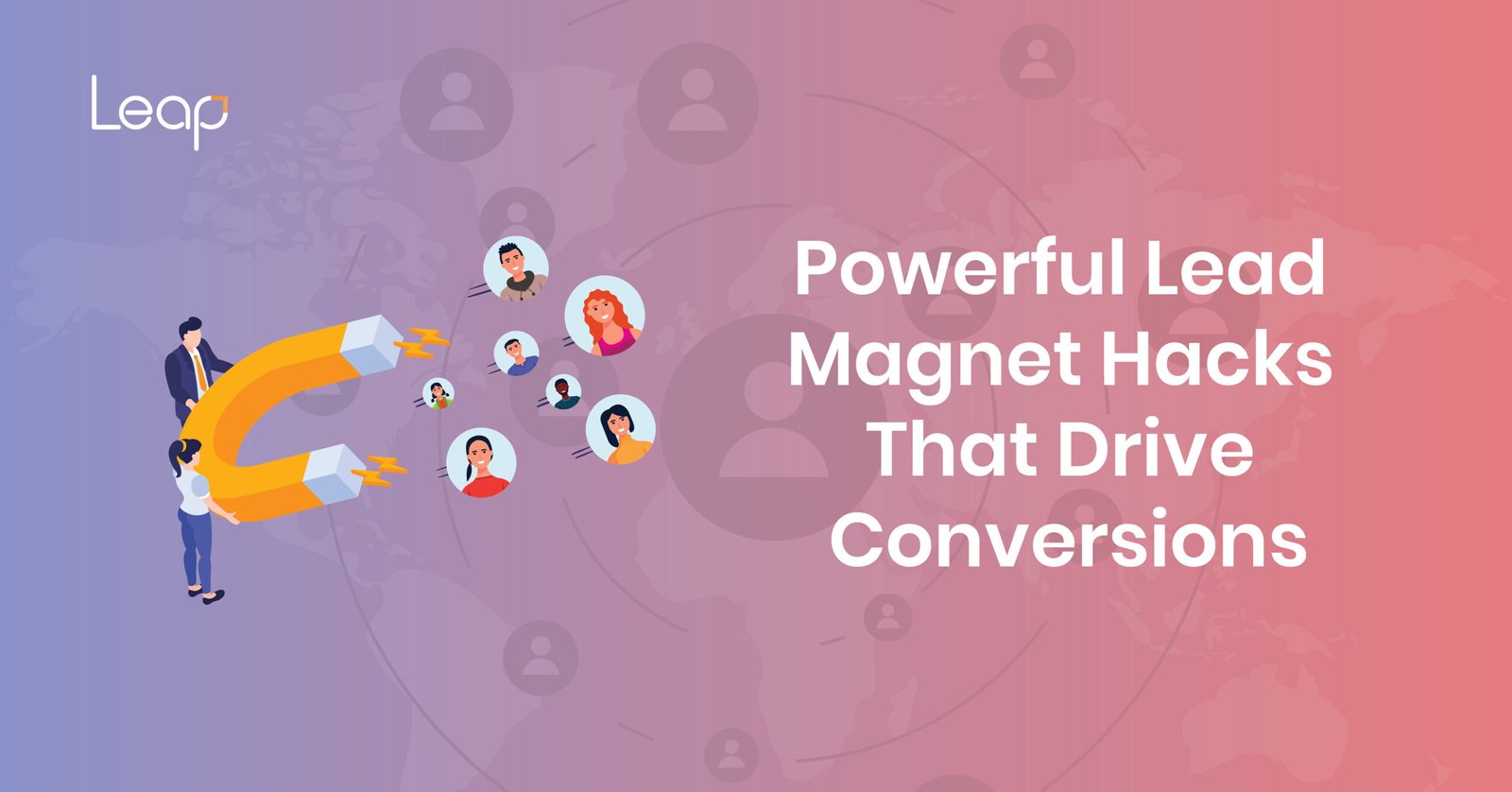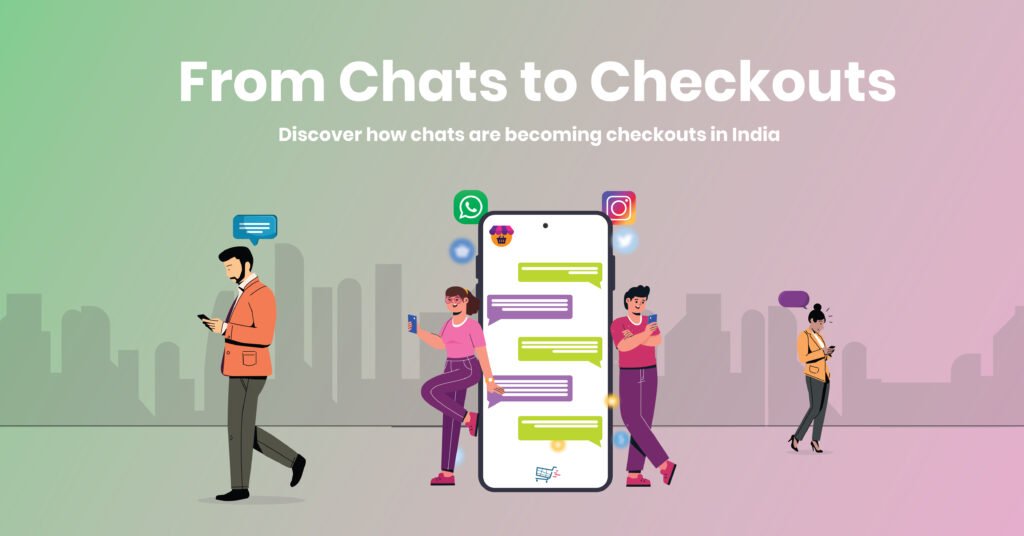
India, a nation of over 1.4 billion people, is on the cusp of an e-commerce revolution. However, this revolution isn’t unfolding on traditional websites or monolithic marketplaces. It’s happening where the average Indian lives their digital life: within the chat window.
Conversational Commerce—the seamless integration of shopping, support, and transactions within messaging platforms like WhatsApp and Instagram Direct Messages (DMs)—is redefining the Indian customer journey from a multi-step, app-hopping chore to a single, continuous, human-like dialogue.
For digital marketing agencies like leapmarcom, understanding and mastering this shift is not optional; it’s the core mandate for driving client success. This isn’t just a feature; it’s a tectonic shift from transactional e-commerce to relational commerce, one that leverages India’s unique digital landscape: high mobile penetration, low app fatigue, and a deep cultural preference for personal, human interaction.
This in-depth guide explores how conversational commerce is fundamentally transforming every stage of the customer journey, why India is its global epicenter, and the strategic marketing playbook businesses must adopt to thrive in this new, chat-first economy.
I. The Scale and Significance: Why Conversational Commerce Owns India
The rapid adoption of conversational commerce in India is powered by a perfect storm of platform dominance, demographic trends, and a preference for simplicity.
1. The WhatsApp & Instagram Advantage in Numbers
Messaging apps aren’t just popular; they are the digital operating system for a majority of Indians.
Platform | India User Base (Approx.) | Key Metric & Significance |
535−600+ Million Users (The largest market globally) | 98% Open Rate—far surpassing email (21%) and SMS (20%. Messages are read and engaged with immediately. | |
360+ Million Users | Dominates the Gen Z and Millennial demographic, driving visual discovery via Reels and Stories, leading directly into DMs for purchase. | |
Overall Preference | N/A | 90% of surveyed non-savvy digital users prefer to interact with small businesses via conversational platforms rather than downloading an app or making a call. |
The data confirms a critical insight: Indian consumers have developed “App Fatigue.” They prefer to conduct more tasks on the apps they already use and trust, making the familiar chat interface the most comfortable storefront. This dramatically lowers the barrier to entry for new online shoppers, especially those in Tier-2 and Tier-3 cities where the learning curve for a new e-commerce app is a significant deterrent.
2. The Cultural Element: Trust and 'Jugaad'
Conversational commerce aligns perfectly with two core facets of Indian consumer behavior:
- Preference for ‘Warm’ Transactions: Indians, particularly for high-value or complex purchases, still place a high value on human interaction. The ability to “talk to a person” (or a very human-like AI) on a trusted platform like WhatsApp mimics the experience of shopping at a local kirana store, fostering trust that traditional e-commerce often lacks.
- The Power of Verification and Security: With increasing concerns over online fraud, the official Verified Business Profiles and the end-to-end encryption of WhatsApp messages provide a strong trust marker. 65%of Indian consumers report trusting messages from businesses on WhatsApp more than ads on other social media or websites.
II. The Customer Journey: Reimagined Through Conversation
Conversational commerce doesn’t just digitize the customer journey; it condenses and humanizes it. It moves the entire sales funnel—from discovery to retention—into a single, persistent, and personalized chat thread.
1. Stage 1: Discovery and Awareness (From Clicks to Chats)
In the conversational economy, the funnel’s top is no longer about clicks; it’s about initiating a meaningful conversation.
A. Instagram as the Visual Storefront
Instagram, with its Reels and Stories, acts as the primary visual discovery engine. Brands use compelling, short-form video content to showcase products.
- The Transition: Instead of a generic link to a website, the primary Call-to-Action (CTA) becomes “Click-to-DM” or using the Product Sticker that links directly to a conversation. This move transforms a passive viewer into an active lead in real-time.
- Case in Point: A fashion brand posts a reel featuring a new collection. The CTA is “DM us ‘LOOKBOOK’ for an instant catalog and a personalized stylist consultation.” This immediately captures a high-intent lead in an environment the consumer is comfortable in.
B. WhatsApp's Strategic Lead Generation
Click-to-WhatsApp Ads are among the highest-performing ad formats in India.
- Frictionless Entry: An ad on Facebook or Instagram, instead of directing to a landing page that requires form-filling, opens a WhatsApp chat with a pre-filled message (e.g., “I’d like to know more about the new laptop model.”)
- Immediate Qualification: Generative AI-powered chatbots can instantly respond to this pre-filled message, asking 2-3 qualifying questions (e.g., “What is your budget?” or “Are you looking for a gaming or work laptop?”). This instantly qualifies the lead, reducing the burden on human sales agents and drastically lowering the Cost Per Acquisition (CPA) by 50−60% compared to traditional search ads.
2. Stage 2: Consideration and Personalization (The Digital Sales Assistant)
This is where the human-centric nature of chat truly shines, replacing impersonal FAQ pages and generic recommendations.
A. Catalogues and Rich Media in Chat
Businesses use WhatsApp Business Catalogues and carousels right within the chat window.
- Interactive Browsing: A customer asking about a product receives a visually rich carousel of options, complete with pricing and a brief description, all without leaving the chat. This is often an automated, AI-driven response, but it feels like a concierge service.
- The Leap MarCom Insight: For complex services, like those offered by Leap MarCom, conversational AI can be used to deliver tailored service packages. A prospect asking about “SEO Services” could be guided through a menu leading to a dynamic PDF of “SEO Solutions for E-Commerce” right in the chat. This highly personalized content delivery vastly improves engagement and perceived value.
B. Real-Time Human-Agent Handoff
The most successful conversational models are hybrid. If a customer’s query becomes too complex, emotional, or requires a custom quote, the AI seamlessly hands the conversation over to a live human agent.
- Context is King: The human agent receives the entire chat history (including the qualifying questions, product views, and any previous interactions), eliminating the frustrating need for the customer to repeat themselves. This delivers a 98% satisfaction rate on messaging, significantly higher than traditional phone or email support.
3. Stage 3: Conversion and Purchase (In-Chat Transactions)
Conversational commerce moves the entire payment loop into the chat interface, minimizing friction points that cause high Cart Abandonment Rates on traditional e-commerce sites.
- UPI Integration (WhatsApp Pay): The integration of UPI (Unified Payments Interface) directly into WhatsApp allows for a seamless, single-app transaction. The customer adds items to a cart in the Catalogue, confirms the order, and finalizes the payment within the chat. JioMart’s integration of a full shopping experience inside WhatsApp, where customers can order groceries and pay via UPI without leaving the app, serves as the gold standard for this model in India.
Frictionless Checkout: Research shows that 40% of surveyed customers abandon a purchase when asked to install a new app. Conversational commerce eliminates this hurdle, contributing to a 2.5× increase in the lead-to-conversion ratio.
4. Stage 4: Retention and Loyalty (The Persistent Relationship)
The chat thread doesn’t end after the sale; it becomes the permanent record of the customer relationship.
- Order Tracking and Updates: Automated, proactive messages for order confirmation, shipping updates, and delivery status are sent in a high-engagement channel. This drives down customer support calls and builds confidence.
- Cart Abandonment Recovery: Highly personalized and timely messages can be sent to customers who left items in their chat-based cart (e.g., “Hey [Name], your chair is still waiting! Reply ‘YES’ to complete your order and get free shipping today.”). These reminders boast exceptionally high conversion rates.
- Post-Purchase Engagement: This is crucial for Lifetime Value (LTV). Brands use the chat to:
- Solicit feedback and reviews (high response rate).
- Offer personalized upsells (e.g., “Since you bought the coffee maker, would you like to see our limited-edition Arabica beans?”).
- Handle service requests, warranties, and returns in a fraction of the time compared to email support. The repeat purchase rate for businesses using WhatsApp post-purchase engagement is 40% higher than those using email campaigns.
III. The Generative AI Accelerator: Scaling the Human Touch
The true game-changer that makes conversational commerce viable for large enterprises (not just SMBs) is Generative AI (GenAI).
1. From Scripted Bots to Contextual Assistants
Old chatbots relied on rigid, keyword-based scripts. If a customer went off-script, the bot broke. GenAI changes this entirely:
- Natural Language Understanding (NLU): GenAI can understand the intent, context, and even the sentiment of complex, vernacular, and typo-filled queries in over 50 Indian languages.
- Proactive and Creative Responses: Instead of just pulling an FAQ answer, a GenAI assistant can synthesize information from multiple databases (CRM, PIM, inventory) to provide a nuanced, human-like response, even offering tailored, novel recommendations.
Example: Insurance: An insurance company using GenAI can guide a customer through the initial stages of a complex claim process—gathering documents, answering policy questions, and providing context-aware next steps—all in a personalized chat, significantly reducing call centre load.
2. The Mandate for Agencies: The AI-Driven Conversational Playbook
Digital marketing agencies must pivot from simply managing ad campaigns to engineering end-to-end conversational journeys.
- Conversation Flow Design: The key service is designing the Bot→Human→Purchase flow. This requires a deep understanding of which queries can be automated, when a human is required to build trust, and how to make the handoff seamless.
- Data Integration: Conversational commerce generates an incredible amount of first-party, high-intent data. Agencies need to integrate the chat data with the client’s CRM and marketing automation platforms to inform future personalization and ad targeting.
- Creative Assets for Chat: The creative assets for a Click-to-WhatsApp ad are different from a website banner. The copy must be concise, the offer must be clear, and the pre-filled chat message must be a compelling trigger.
This is where strategic partners like leapmarcom excel. By leveraging data-driven insights and proprietary AI tools, they design and manage the entire conversational infrastructure, ensuring every chat becomes a step closer to a conversion, not a dead end.
IV. Strategic Playbook: Mastering the Two Platforms
While both are Meta-owned and share the conversational philosophy, the roles of WhatsApp and Instagram are distinct and must be leveraged accordingly.
1. WhatsApp: The Retention and Transaction Engine
WhatsApp is the 24/7 digital salesperson and support team.
- Focus: High-intent lead capture, transaction completion, and post-sale retention.
- Key Features to Master:
- WhatsApp Business API: Essential for scaling. It enables the use of intelligent bots, third-party CRM integration, and managing high message volumes.
- Catalog and Collections: Keep product listings updated in real-time.
- Template Messages (HSMs): Use approved, high-value message templates for proactive outreach like shipping alerts, delivery notifications, and payment reminders.
- Cart Abandonment Automation: Automated, timely messages to recover lost sales.
2. Instagram DMs: The Discovery and Micro-Moment Commerce Platform
Instagram is the visual curator and demand generator.
- Focus: Visual storytelling, product discovery, and driving initial chat engagement.
- Key Features to Master:
- Reels and Stories with Product Tags: Use short-form video to maximize visibility, driving traffic to the DM.
- Automation in DMs: Set up automated responses for common keywords (e.g., a customer DMs “PRICE,” and the bot instantly responds with the product details and a link to the WhatsApp Catalogue). This reduces the manual workload of the social media team.
- Live Shopping with DM Checkout: Host live events where viewers can instantly DM a code or keyword to reserve an item or initiate a purchase chat, mirroring the immediacy of TV shopping but with a personalized, digital-first experience.
V. Conclusion: The Future of Digital Marketing is Conversational
Conversational commerce is not a passing trend; it is the evolution of e-commerce in a mobile-first, trust-driven market like India. It is dissolving the walls between marketing, sales, and customer support, creating a unified, “always-on” experience that is inherently more personal and efficient.
Businesses that cling to traditional websites as the sole hub for commerce will soon find themselves marginalized. The new winning strategy requires investing in a robust conversational infrastructure, powered by AI, that can meet the Indian consumer where they are: in the chat.
For brands ready to make this strategic leap and design high-converting, AI-driven conversational journeys, partnering with a digital marketing leader is essential. leapmarcom possesses the expertise in generative AI, platform integration, and customer journey mapping required to turn every chat into a conversion and build enduring customer loyalty in India’s booming conversation economy. The time to start the conversation is now.


